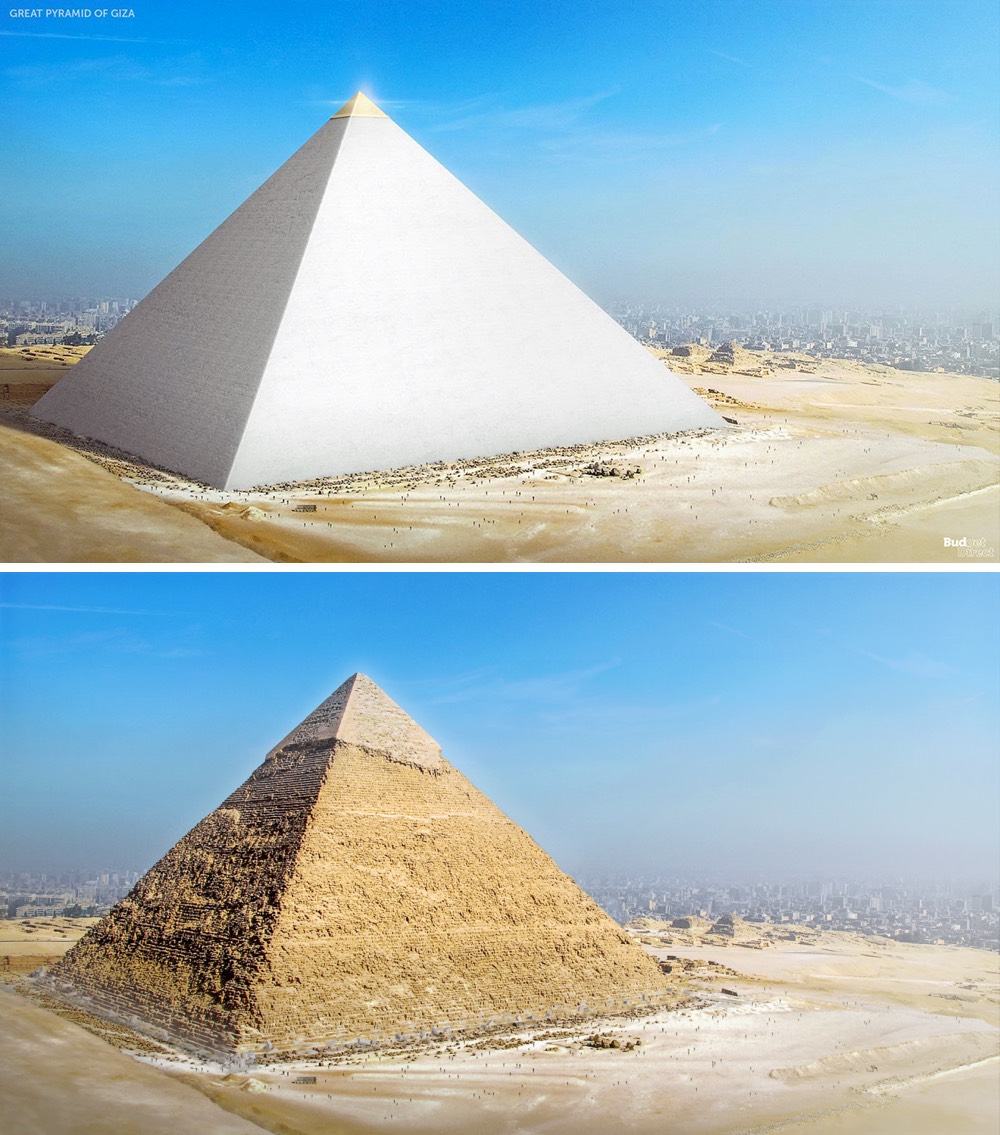The Great Pyramid at Giza—the oldest and most intact of the seven ancient wonders of the ancient world—became a potent symbol of the sublime in the 19th century, a symbol of power so absolute as to eclipse human understanding. After Napoleon’s first expedition to Giza, “Egytomania… swept through European culture and influenced the plastic arts, fashion, and design,” writes Miroslav Verner in The Pyramids: The Mystery, Culture, and Science of Egypt’s Great Monuments.
At the end of the century, Herman Melville satirized the trend that would eventually give rise to Ancient Aliens, asking in an 1891 poem, “Your masonry—and is it man’s? More like some Cosmic artisan’s.” Egyptomaniacs saw otherworldly magic in the pyramid. For Melville, it “usurped” nature’s greatness, standing as “evidence of humankind’s monumental will to power,” as Dawid W. de Villiers writes.

The ancient Greeks believed the pyramids were built with a massive slave labor force, a theory that has persisted. As Verner exhaustively argues in his book, however, they were not only built by humans—instead of aliens or gods—but they were constructed by tradesmen and artisans whose skills were in high demand and who were paid wages and organized under a complex bureaucracy.
And as you can see reconstructed in the Smithsonian video at the top, one of those artisanal tasks was to polish the monument’s outer limestone to a gleaming white finish that reflected “the powerful Egyptian sun with a dazzling glare.” Once the pyramid was completed, “it must have truly added to the impression of Giza as a magical port city, bathed in sunlight,” says archaeologist Mark Lehner in the clip.
In addition to its glowing, polished limestone sides, “the structure would have likely been topped with a pyramidion, a capstone made of solid granite and covered in a precious metal like gold,” writes Kottke. “No wonder they thought their rulers were gods.” Or did ancient Egyptians see the Great Pyramid as a masterpiece of human engineering, built with the skill and sweat of thousands of their compatriots?
Who can say. But it’s likely that 19th-century European explorers and artists might have characterized things differently had the Great Pyramid still scattered the sun over the desert like an ancient beacon of light instead of sitting “dumb,” as Melville wrote, stripped of its facade, waiting to have all sorts of mysterious meanings wrapped around it.